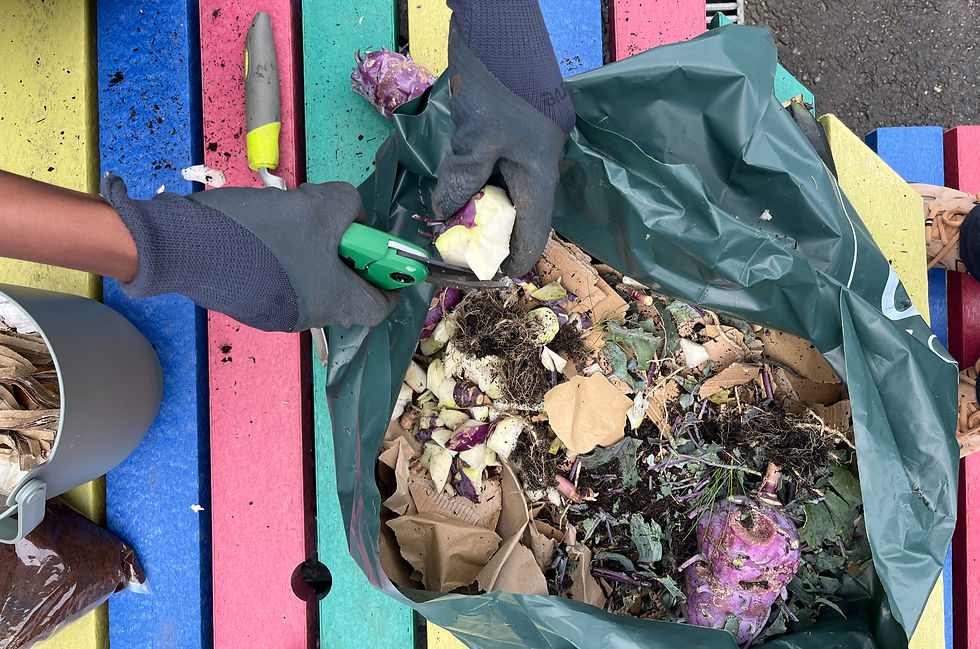Seed: Soil: Plate and the Grow Box garden.
- Will Richardson
- Oct 22, 2024
- 2 min read
Freda is a green thumbed chef on an adventure to grow, cook and eat. She is also our resident gardener here at Grow Box.
To kick things off at Grow Box, Freda set out a 12 week course focused around the journey of growing food, from seed to plate. The idea being to give people a chance to learn through gardening, with the aim of growing food in an area where green space may not be so readily available. Freda’s session, Seed Soil Plate, provides a taste of what it takes to plant, nurture and harvest a garden.

Once the ice was broken, we were introduced to the main event, soil. We began by exploring one of the most essential materials and building blocks of our green planet. We learnt that the main types of soil are clay, loam, sand, chalk, silt and pete, and also that we weren't getting away without homework, which was to take a sample of soil from our gardens or local green space, in order to identify the type of soil.
Fill a jar with soil.
Top up with water.
Wait! Let it settle and the soil types will separate.

Next: weeds and composting. Which weeds are edible? How to spot weeds in your growing space? How to get clued up on easy composting methods and how does composting work in real life? All these questions were asked and answered. We chopped, mashed and smashed a selection of old turnips, old apple cores and banana skins - the Grow Box beds were weeded and voila! A compost bin was born.

By this point, our Grow Box space was rapidly transforming and well on the way to becoming a space that did more than just resemble a garden - it was thriving! Mint, thyme and parsley is now growing from the herb garden, a greenhouse has popped up, wooden arches appeared as if from nowhere and all kinds of fruit trees have sprung from a variety of planters.

With the nights drawing in, it has now become time to start investing in the future of the Grow Box garden - with seeds. We discussed the different types of seeds, how plants create them, how to save your own seeds and why seed saving is so important for the protection of endangered varieties of plants. Seed trays serve as a cozy bed, while the greenhouse will offer shelter for cabbage, kale, carrots, and garlic, which will germinate and be ready to plant in the garden once spring arrives. Stay tuned for updates on our growing garden!



Comments